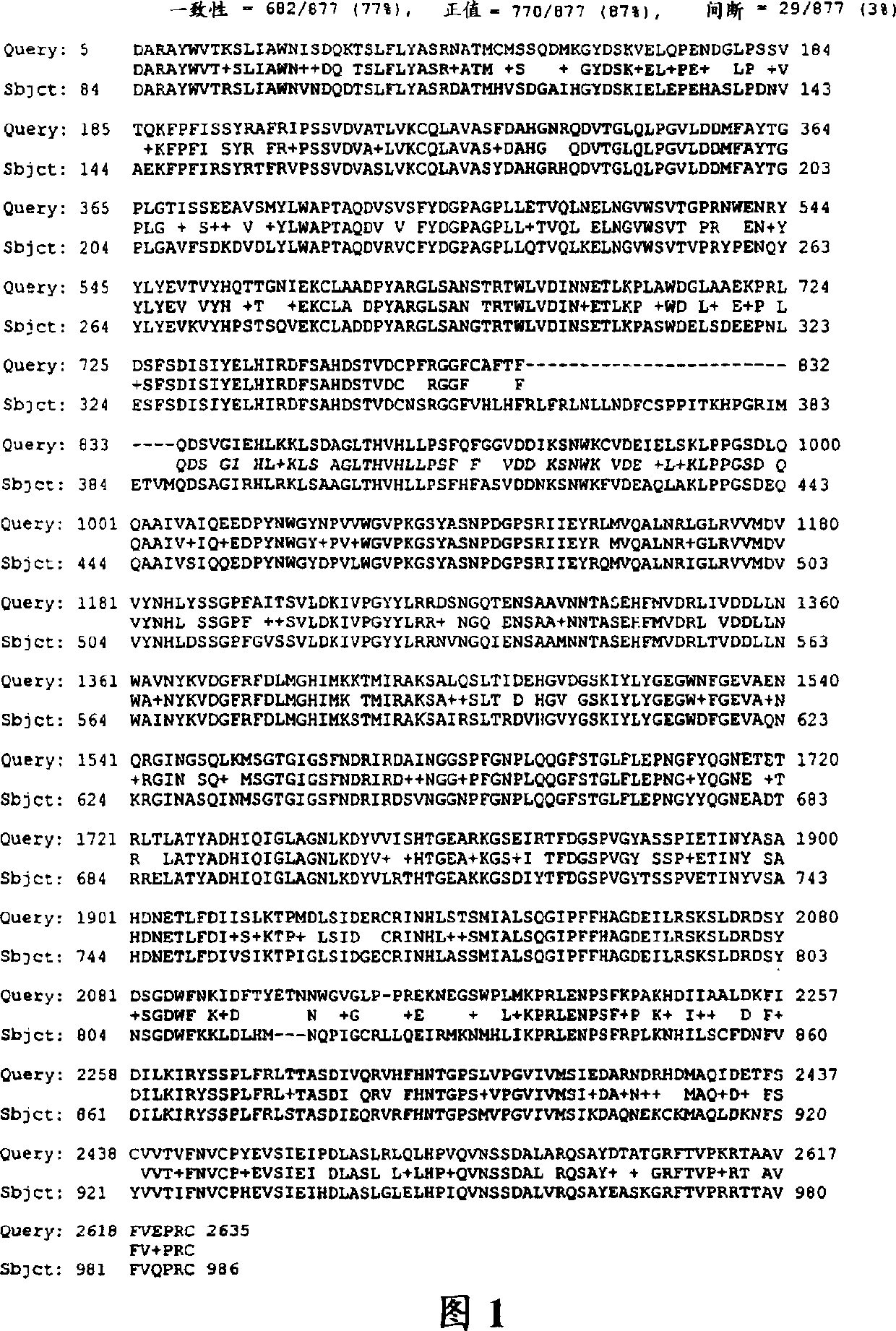Corn pullulanase
A technology of pullulanase and nucleic acid fragments, applied in the directions of enzymes, hydrolase, glycosylase, etc., can solve the problems such as the undocumented corn pullulanase gene
- Summary
- Abstract
- Description
- Claims
- Application Information
AI Technical Summary
Problems solved by technology
Method used
Image
Examples
Embodiment 1
[0060] Construction of maize cDNA library, isolation and sequencing of cDNA clones
[0061] A cDNA library representing mRNA was prepared from the endosperm of maize (Zea mays) LE392 20 days after pollination, following the product instructions (Stratagene Cloning SystemLa jolla, CA) at Uni-ZAP TM cDNA libraries were prepared in XR vectors. According to the protocol provided by Stratagene put Uni-ZAP TM The XR library was converted into a plasmid library. In transformation, the cDNA insert was obtained in the plasmid vector pBluescript. cDNA library normalization essentially followed the protocol disclosed in US Patent No. 5,482,845. cDNA inserts randomly picked from bacterial clones containing the recombinant pBluescript plasmid were amplified by polymerase chain reaction using primers specific for vector sequences flanking the inserted maize cDNA sequence. The sequence of the amplified insert DNA was determined in a dye-primer sequencing reaction according to the protoco...
Embodiment 2
[0063] Identification and characterization of cDNA clones
[0064]By running BLAST (Basic Local Aligment Search Tool; Altschul; S.F. et al. (1990) J. Molecular Biology, 215: 403-410; also check www.ncbi.nlm.nih.gov / BLAST / ) to find and GenBank database obtained Sequence similarity was used to identify the cDNA encoding maize pullulanase. The BLASTN algorithm provided by the National Center for Biotechnology Information (NCBI) was used to analyze the cDNA sequences obtained in the examples for similarity to those containing published DNA sequences obtained in the GenBank database. DNA sequences were translated in all reading frames and compared with all published proteins obtained in the GenBank database using the BLASTX algorithm provided by NCBI (Gish.W and States.D.J. (1993) Nature Genetics, 3:266-272) sequence is similar.
[0065] The BLASTN search using the clone cen3n.pk0028.d2 shows that this nucleotide sequence is consistent with the nucleotide encoding r...
Embodiment 3
[0070] Expression of Chimeric Genes in Plant Cells
[0071] A chimeric gene can be constructed that includes a positively positioned maize pullulanase. The maize 27KD zein promoter located at the 5' end of the maize pullulanase fragment and the 10KD zein promoter located at the 3' end of the maize pullulanase fragment. A maize pullulanase fragment of the gene can be generated by polymerase chain reaction (PCR) using appropriate oligonucleotide primers from a cDNA clone comprising the maize pullulanase. When inserted into the digested vector pML103 as follows, a cloning site (NcoI or SmaI) can be incorporated into the oligonucleotide to provide the correct positioning of the DNA fragment. Amplification was performed in 100 μl of standard PCR mix consisting of 0.4 mM of each oligonucleotide and 0.3 pM of target DNA prepared in 10 mM Tris-HCl, pH 8.3, 50 mM KCl, 1.5 mM MgCl 2 0.001% w / v gelatin, 200mM dGTP, 200mM dATP, 200mM dTTP, 200mMdCTP and 0.025 units of Amplitaq ...
PUM
 Login to View More
Login to View More Abstract
Description
Claims
Application Information
 Login to View More
Login to View More - R&D
- Intellectual Property
- Life Sciences
- Materials
- Tech Scout
- Unparalleled Data Quality
- Higher Quality Content
- 60% Fewer Hallucinations
Browse by: Latest US Patents, China's latest patents, Technical Efficacy Thesaurus, Application Domain, Technology Topic, Popular Technical Reports.
© 2025 PatSnap. All rights reserved.Legal|Privacy policy|Modern Slavery Act Transparency Statement|Sitemap|About US| Contact US: help@patsnap.com

